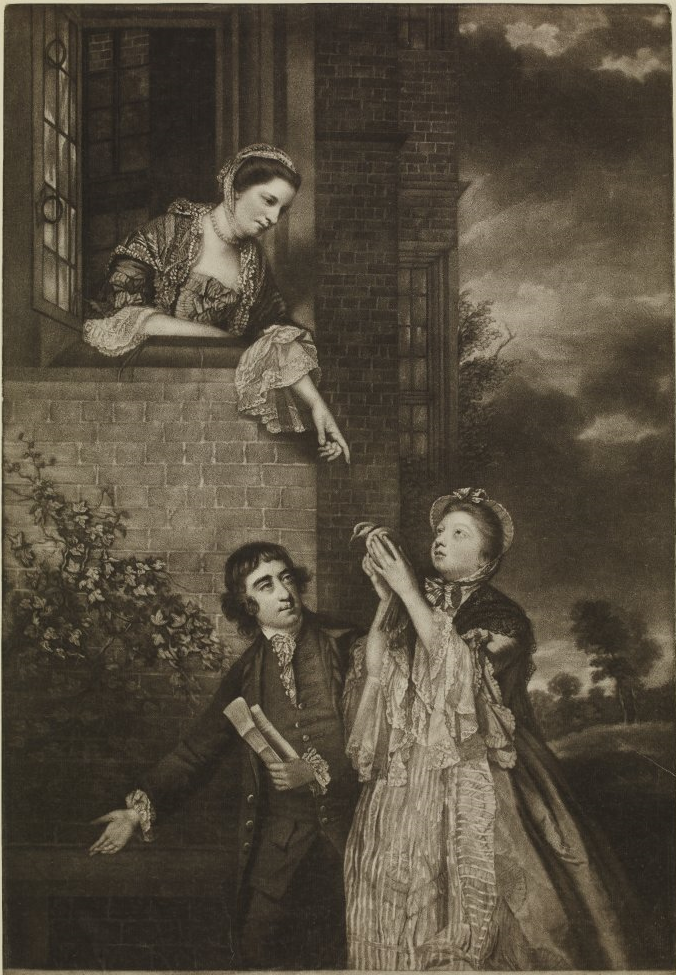|
Garlinge
Garlinge is a village and suburb of Margate, in the Thanet district, in Kent, England, situated southwest of the centre of the town. Amenities There is a small selection of shops in the village: newsagent/off-licence, two hairdressers, bakery/cafe, pharmacy, a petrol station, a mini supermarket/post office and two car workshops. There are a number of restaurants and take aways, including a fish and chip shop. The village has two pubs – the Rodney on the High Street and the Hussar on Canterbury Road - the latter serves meals and has accommodation. History Garlinge takes its name from the former Garling's Farm, which was owned by the London hospitals Bridewell and Bethlem. The Dent-de-Lion gateway is a grade II* listed building, dating from the late 14th/early 15th century (c1380). Garlinge developed with the arrival of the railway to Margate and steam-packets bringing holiday makers from London. There was a Methodist Chapel in Garlinge by 1848. All Saints Church on Hart ... [...More Info...] [...Related Items...] OR: [Wikipedia] [Google] [Baidu] |
Municipal Borough Of Margate
Margate is a seaside town in the Thanet District of Kent, England. It is located on the north coast of Kent and covers an area of long, north-east of Canterbury and includes Cliftonville, Garlinge, Palm Bay and Westbrook. In 2011 it had a population of 61,223. The town has been a significant maritime port since the Middle Ages, and was associated with Dover as part of the Cinque Ports in the 15th century. It became a popular place for holidaymakers in the 18th century, owing to easy access via the Thames, and later with the arrival of the railways. Popular landmarks include the sandy beaches and the Dreamland amusement park. During the late 20th century, the town went into decline along with other British seaside resorts, but attempts are being made to revitalise the economy. History Margate was listed in the Domesday Book of 1086 as lying within the hundred of Thanet and the county of Kent. Margate was recorded as "Meregate" in 1264 and as "Margate" in 1299, but the ... [...More Info...] [...Related Items...] OR: [Wikipedia] [Google] [Baidu] |
Margate
Margate is a seaside resort, seaside town in the Thanet District of Kent, England. It is located on the north coast of Kent and covers an area of long, north-east of Canterbury and includes Cliftonville, Garlinge, Palm Bay, UK, Palm Bay and Westbrook, Kent, Westbrook. In 2011 it had a population of 61,223. The town has been a significant maritime port since the Middle Ages, and was associated with Dover as part of the Cinque Ports in the 15th century. It became a popular place for holidaymakers in the 18th century, owing to easy access via the Thames, and later with the arrival of the railways. Popular landmarks include the sandy beaches and the Dreamland Margate, Dreamland amusement park. During the late 20th century, the town went into decline along with other British seaside resorts, but attempts are being made to revitalise the economy. History Margate was listed in the Domesday Book of 1086 as lying within the hundred of Thanet and the county of Kent. Margate was rec ... [...More Info...] [...Related Items...] OR: [Wikipedia] [Google] [Baidu] |
Herne Bay And Sandwich (UK Parliament Constituency)
Herne Bay and Sandwich is a constituency of the House of Commons in the UK Parliament. Further to the completion of the 2023 Periodic Review of Westminster constituencies, it was contested for the first time at the 2024 general election. It is represented by Roger Gale, of the Conservatives, who was MP for the predecessor seat of North Thanet from 1983 to 2024. The constituency is named for the towns of Herne Bay and Sandwich in Kent. Boundaries The constituency is composed of the following (as they existed on 1 December 2020): * The City of Canterbury wards of: Beltinge; Greenhill; Herne & Broomfield; Heron; Reculver; Sturry; West Bay. * The District of Dover wards of: Little Stour & Ashstone; Sandwich. * The District of Thanet wards of: Birchington North; Birchington South; Garlinge; Thanet Villages; Westbrook; Westgate-on-Sea. It comprises the following areas of Kent: * Approximately 80% of the former North Thanet seat, including Herne Bay, Birchington-on-Sea and West ... [...More Info...] [...Related Items...] OR: [Wikipedia] [Google] [Baidu] |
Villages In Kent ...
See also * List of settlements in Kent by population * List of civil parishes in Kent * :Civil parishes in Kent * :Towns in Kent * :Villages in Kent * :Geography of Kent * List of places in England {{Kent Places Kent Kent is a Ceremonial counties of England, ceremonial county in South East England. It is bordered by Essex across the Thames Estuary to the north, the Strait of Dover to the south-east, East Sussex to the south-west, Surrey to the west, and Gr ... [...More Info...] [...Related Items...] OR: [Wikipedia] [Google] [Baidu] |
Broadstairs And St Peters
Broadstairs and St Peter's is a civil parish in the Thanet district of Kent, England. The parish comprises the settlements of Broadstairs, St Peter's and Westwood, including Westwood Cross. It is a successor parish, created in 1974 to replace Broadstairs and St Peter's Urban District. It is governed by Broadstairs and St Peter's Town Council. The population in 2001 was 24,370 in 10,594 households.2001 Census: Broadstairs and St. Peter's CP Demography At the 2001 UK census, the parish of Broadstairs and St Peter's had 24,370 residents in 10,597 households. Of those households, 34.2% were married couples, 6.7% were cohabiting Cohabitation is an arrangement where people who are not legally married live together as a couple. They are often involved in a romantic or sexually intimate relationship on a long-term or permanent basis. Such arrangements have become incr ... couples and 8.3% were lone parents. 31.8% of all households were made up of individuals, and 20.9% had so ... [...More Info...] [...Related Items...] OR: [Wikipedia] [Google] [Baidu] |
Higher Education
Tertiary education (higher education, or post-secondary education) is the educational level following the completion of secondary education. The World Bank defines tertiary education as including universities, colleges, and vocational schools. ''Higher education'' is taken to include undergraduate and postgraduate education, while vocational education beyond secondary education is known as ''further education'' in the United Kingdom, or included under the category of ''continuing education'' in the United States. Tertiary education generally culminates in the receipt of Academic certificate, certificates, diplomas, or academic degrees. Higher education represents levels 5, 6, 7, and 8 of the ISCED#2011 version, 2011 version of the International Standard Classification of Education structure. Tertiary education at a nondegree level is sometimes referred to as further education or continuing education as distinct from higher education. UNESCO stated that tertiary education focu ... [...More Info...] [...Related Items...] OR: [Wikipedia] [Google] [Baidu] |
Electoral Ward
A ward is a local authority area, typically used for electoral purposes. In some countries, wards are usually named after neighbourhoods, thoroughfares, parishes, landmarks, geographical features and in some cases historical figures connected to the area (e.g. William Morris Ward in the London Borough of Waltham Forest, England). It is common in the United States for wards to simply be numbered. Origins The word "ward", for an electoral subdivision, appears to have originated in the Wards of the City of London, where gatherings for each ward known as "wardmotes" have taken place since the 12th century. The word was much later applied to divisions of other cities and towns in England and Wales and Ireland. In parts of northern England, a ''ward'' was an administrative subdivision of a county, very similar to a hundred in other parts of England. Present day In Australia, Canada, New Zealand, South Africa, Sri Lanka, the United Kingdom, and the United States, wards are an el ... [...More Info...] [...Related Items...] OR: [Wikipedia] [Google] [Baidu] |
Charles James Fox
Charles James Fox (24 January 1749 – 13 September 1806), styled ''The Honourable'' from 1762, was a British British Whig Party, Whig politician and statesman whose parliamentary career spanned 38 years of the late 18th and early 19th centuries. He was the rival, arch-rival of the Tories (British political party), Tory politician William Pitt the Younger; his father Henry Fox, 1st Baron Holland, a leading Whig of his day, had similarly been the great rival of Pitt's famous father, William Pitt, 1st Earl of Chatham ("Pitt the Elder"). Fox rose to prominence in the House of Commons of Great Britain, House of Commons as a forceful and eloquent speaker with a notorious and colourful private life, though at that time with rather conservative and conventional opinions. However, with the coming of the American War of Independence and the influence of the Whig Edmund Burke, Fox's opinions evolved into some of the most Classical radicalism, radical to be aired in the British Parliament ... [...More Info...] [...Related Items...] OR: [Wikipedia] [Google] [Baidu] |
A Vision Of Britain Through Time
The Great Britain Historical GIS (or GBHGIS) is a spatially enabled database that documents and visualises the changing human geography of the British Isles, although is primarily focussed on the subdivisions of the United Kingdom mainly over the 200 years since the first census in 1801. The project is currently based at the University of Portsmouth, and is the provider of the website ''A Vision of Britain through Time''. NB: A "GIS" is a geographic information system, which combines map information with statistical data to produce a visual picture of the iterations or popularity of a particular set of statistics, overlaid on a map of the geographic area of interest. Original GB Historical GIS (1994–99) The first version of the GB Historical GIS was developed at Queen Mary, University of London between 1994 and 1999, although it was originally conceived simply as a mapping extension to the existing Labour Markets Database (LMDB). The system included digital boundaries for ... [...More Info...] [...Related Items...] OR: [Wikipedia] [Google] [Baidu] |
County Review Order
The Local Government Act 1929 ( 19 & 20 Geo. 5. c. 17) was an act of the Parliament of the United Kingdom that made changes to the Poor Law and local government in England and Wales. The act abolished the system of poor law unions in England and Wales and their boards of guardians, transferring their powers to local authorities. It also gave county councils increased powers over highways, and made provisions for the restructuring of urban and rural districts as more efficient local government areas. Poor Law reform Under the act all boards of guardians for poor law unions were abolished, with responsibility for public assistance transferred to public assistance committees of county councils and county boroughs. The local authorities took over infirmaries and fever hospitals, while the workhouses became public assistance institutions. Later legislation was to remove these functions from the control of councils to other public bodies: the National Assistance Board and the Nat ... [...More Info...] [...Related Items...] OR: [Wikipedia] [Google] [Baidu] |




